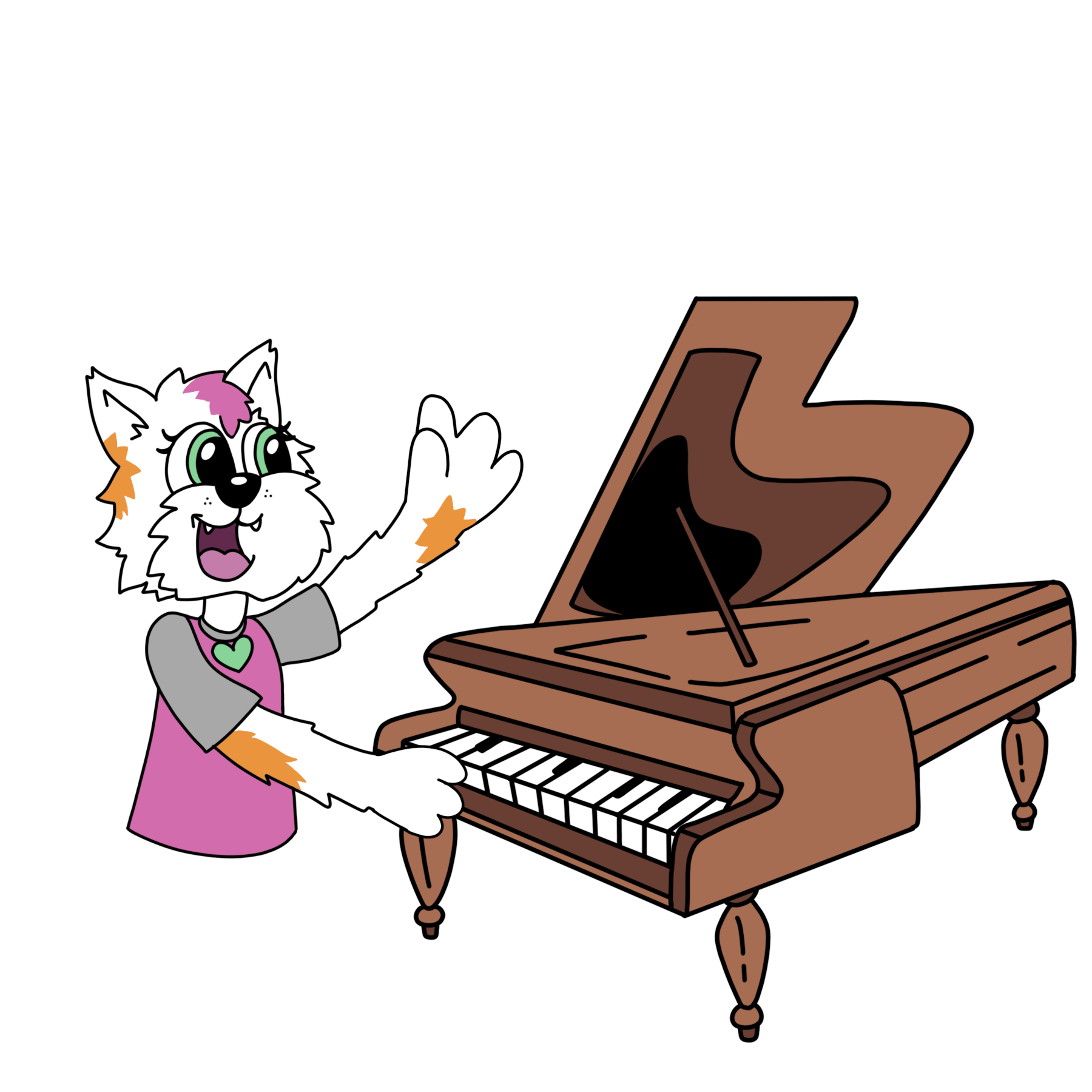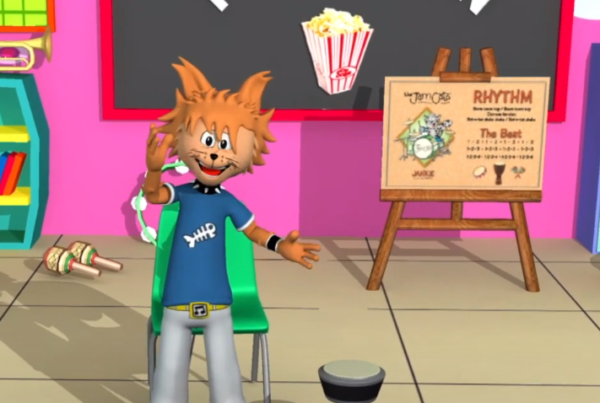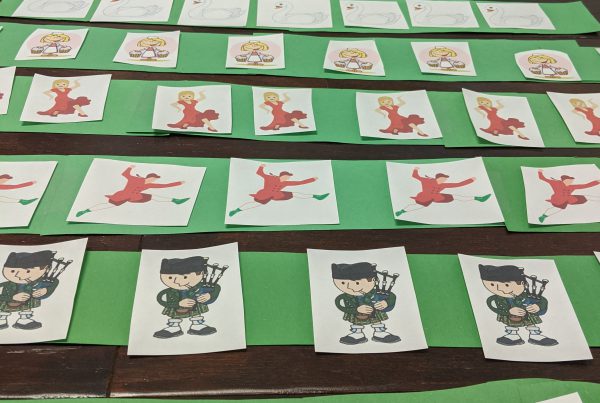Welcome to 2021! The Jam Cats January theme is genre. In music, genre is typically defined as a category of music style. There are so many genres and sub-genres. This is a fun topic to go over with kids because it can really be an eye-opening experience for children to hear new genres. When teaching genre with young children, I like to do anchor charts that are heavy on a main visual component. Because literacy is not strong for Kindergarten and younger, the characteristics I write on the chart are minimal and serve mostly for letter and word exposure.
There are so many genres. SO MANY. For the sake of brevity, I’m going to display three. When The Jam Cats teach the unit in classes, we typically do around 10. When I do anchor charts, I often use post-its for the genre characteristics. It doesn’t always look as neat as writing directly onto the paper, but it does save me time in making multiple charts for multiple classes. It also allows me to save the chart for next January! If you’re doing this at home, you’re not travelling, and you don’t need this next year (or mind making more), go ahead and draw on that anchor chart!
I tend to follow a format in teaching genre; brainstorm, active listening, discuss characteristics, passive listening, read. I prefer to start with a song that fits the genre without even talking about characteristics of the genre because I want the listening experience to happen without any prior judgement. It also lets the kids be part of the discussion when we talk about characteristics.
Brainstorm
Introduce the word “genre.” It’s not a word typically used in toddler-preschool education, and it may even be really fun for some kids to say. We define our new music word genre and then I ask if anyone can think of any genres. The discussion then moves to what defines a genre. What are things that will create a “style” of music? We discuss things like ways to play an instrument, certain instruments playing together, different tempos of music, different ways of singing. We then move on to the first listening experience.
Active Listening
When we do our listening exercise, I try to do some sort of journaling activity with them. I typically don’t do an entire song with children this young, but I still like to invite the kids to really explore how music makes them feel and how to formulate independent opinions about a piece. With older Pre-K and Kindergarten age, it can be as simple as “draw to the music” (which is an activity we talk about here), or you can be more structured and use a template like this.
You can also invite children to listen for particular instruments for a discussion after the song. Either way, it’s a great way to keep kids engaged in what they’re hearing.
Discuss Characteristics
This is where I like to use an anchor chart. This can also be discussion. Very young children do not need to see these things in writing, but it can be helpful to emergent readers. I use a big picture in the middle and Post-Its with characteristics. We talk about what we heard in the song and I write the genre characteristics on a Post-It. I let the kids stick the Post-It.
Passive Listening
Now that we’ve heard a song and talked about the style, it’s time to just sit back and listen to a song. Again, I won’t typically play an entire song, but usually about a minute. Then we talk about the songs and discuss whether or not we liked them and why. Older kids, I’ll ask if they can think of any other similar songs.
Book
I like to end with some kind of book, too. There are so many books written by or about musicians. They’re often quite colorful, and some are lyrics to songs. We have “Three Little Birds” in our personal library and I’d sing it to my kids from the book sometimes (they add additional verses). My daughter’s face lit up when she heard it for the first time on the radio. I got my son the book “Octopus’s Garden” for Christmas and he turns the pages and sings the song to himself.
Here are some of the anchor charts and books I like to use. Like I said, there are SO MANY different genres. Here are some examples for reggae, jazz, and rock and roll. Please let us know what other songs and books you use when teaching genres!
Jazz
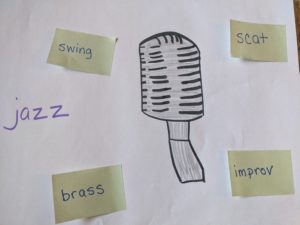
Listening examples: “Cheesecake” by Louis Armstrong, “A Tisket A Tasket” by Ella Fitzgerald, “So What” by Miles Davis
Books: This Jazz Man by Karen Ehrhardt, Skit Skat Raggedy Cat by Ella Fitzgerald, Little Melba and her Big Trombone by Katheryn Russell-Brown
Rock and Roll
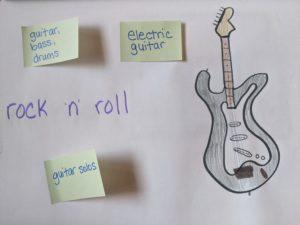
Listening Examples: “Johnny B. Goode” by Chuck Berry, “Under Pressure” by Queen and David Bowie, “Shadows of the Night” by Pat Benatar
Books: Forever Young by Bob Dylan, Gus & Me by Keith Richards, Waking Up is Hard to Do by Neil Sedaka
Reggae
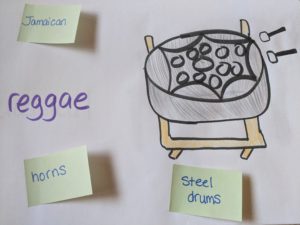
Listening Examples: “Three Little Birds” by Bob Marley, “Kingston Town” by UB-40, “Stir it Up” by The Wailers
Books: Music is in Everything by Ziggy Marley, One Love by Cedella Marley, I Love You, Too by Ziggy Marley

